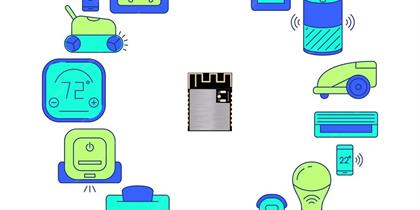

Bluetooth LE Stack
The advent of the Internet of Things (IoT) has brought about a surge in the demand for efficient, reliable, and energy-conscious wireless communication protocols. Bluetooth Low Energy (LE) technology has emerged as a frontrunner in this domain, offering a robust framework for connecting a myriad of devices. Central to the operation of Bluetooth LE is its protocol stack, a meticulously designed set of rules and guidelines that govern how devices communicate. This article aims to unravel the complexities of the Bluetooth LE stack, exploring its architecture, functionalities, and the pivotal role it plays in IoT ecosystems.
The Bluetooth LE Stack Architecture
The Bluetooth LE stack is a layered structure, each level contributing to the seamless operation of Bluetooth-enabled devices. The stack is broadly divided into three segments: the Controller, the Host, and the Application layers.
- Controller: This is the backbone of the Bluetooth LE stack, handling the low-level operations such as radio frequency (RF) communication, link management, and the processing of data packets. It encompasses the Physical Layer (PHY), which deals with the transmission and reception of raw bits over the airwaves, and the Link Layer (LL), responsible for managing the Bluetooth LE radio states and ensuring data integrity through error checking and correction mechanisms.
- Host: The host layer sits above the controller and is responsible for higher-level operations such as device discovery, connection management, and data transfer. It includes the Logical Link Control and Adaptation Protocol (L2CAP), which segments and reassembles data to accommodate the link layer’s capabilities, and the Attribute Protocol (ATT), which facilitates the exchange of data between devices by defining a set of attributes and their corresponding operations.
- Application: The application layer is the topmost tier of the stack, where user applications interact with the Bluetooth LE protocol. It comprises various profiles and services that define specific use cases and application scenarios, such as health and fitness tracking, home automation, and asset tracking.
The Role of Profiles and Services
Profiles and services are integral to the Bluetooth LE stack, providing standardized interfaces for different applications. They ensure interoperability between devices from various manufacturers by defining the structure of data and the operations that can be performed on it.
- Generic Access Profile (GAP): GAP defines the roles that devices can assume during communication, such as broadcaster, observer, peripheral, and central. It also manages non-connection-based communication like advertising and scanning.
- Generic Attribute Profile (GATT): GATT is responsible for the organization and management of attributes, which are the basic units of data exchange in Bluetooth LE. It groups attributes into services and allows for the discovery and access control of these services.
- Security Manager Protocol (SMP): SMP oversees the security aspects of Bluetooth LE communication, including encryption, pairing, and authentication, ensuring that data transmission is secure and tamper-proof.
The Evolution of Bluetooth LE Stack
With each iteration of the Bluetooth specification, the LE stack has evolved to accommodate new features and improvements. Bluetooth 5 introduced features like longer range, faster data rates, and increased broadcast message capacity. Bluetooth 5.1 brought about improved accuracy through angle of arrival and departure, while Bluetooth 5.2 enhanced connection-oriented channels and advertising.
The Future of Bluetooth LE Stack
As IoT continues to expand, the Bluetooth LE stack is expected to evolve further, incorporating features like mesh networking, enhanced security, and better power management. The ongoing development of the stack aims to support the growing demands of IoT devices, ensuring that Bluetooth LE remains a versatile and efficient communication protocol.
Conclusion
The Bluetooth Low Energy stack is a sophisticated structure that enables the efficient and reliable operation of IoT devices. Its layered architecture allows for a clear separation of responsibilities, from the low-level radio communication handled by the controller to the high-level application interactions managed by the application layer. As the IoT landscape continues to evolve, the Bluetooth LE stack will undoubtedly adapt, ensuring that Bluetooth technology remains at the forefront of wireless communication.
You Might Like Also

In the quest for cleaner and healthier indoor air, Bluetooth modules have become an integral part of modern air purifiers. These compact devices enable wireless communication between the air purifier and other systems, such as smartphones or home automation networks. By integrating Bluetooth technology, air purifiers can offer a range of advanced f Read More

In the modern landscape of wireless technology, Bluetooth modules have become indispensable components, enabling a myriad of applications that enhance our daily lives. These compact devices, embedded within a wide array of products, facilitate communication and connectivity with minimal effort. This article delves into the diverse applications of B Read More

The Versatility of Bluetooth Modules: Unleashing Connectivity
In the realm of wireless communication, Bluetooth modules have emerged as the Swiss Army knife of connectivity, enabling seamless interaction between devices over short distances. These compact devices have become indispensable in a variety of applications, from consumer electronics to industrial automation. Bluetooth modules are the silent workhor Read More

Enriching the Museum Experience: The Role of Bluetooth Beacons
Bluetooth Beacons are wireless transmitters that can detect the presence of mobile devices within their vicinity. In a museum setting, beacons can be placed at various exhibits to provide a wealth of information and interactive content to visitors. As a visitor approaches an exhibit, their device can receive a signal from the beacon, triggering an Read More

Bluetooth beacon used in Indoor Positioning Systems
Bluetooth beacons have become an essential component in Indoor Positioning Systems (IPS), providing accurate location data that enhances various applications within controlled environments. In smart retail settings, beacons play a crucial role in enhancing customer experiences, optimizing store operations, and driving business insights. Read More

The role of Bluetooth beacons in RTLS
Bluetooth beacons are playing an increasingly vital role in Real-Time Locating Systems (RTLS), particularly within the context of warehouse management. These tiny, yet powerful devices, are redefining the way warehouses operate, offering a new level of efficiency and precision that is transforming inventory tracking and asset management. Read More











